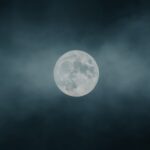
Effects of the Solar Eclipse
Later today, many people in North America, from Mexico to Canada will experience a total solar eclipse—an event that will not be visible in parts of the United States for another 20 years, and over certain states for hundreds of years.
On Plants and Animals
Many are fascinated by events that take place up above. But how do these celestial events affect plants and animals that rely on the sun’s patterns of daylight and darkness? Animal biologists have researched animal behaviors during partial and total solar eclipses. While some pace, swarm, or appear motionless, others—even domesticated animals—begin their nighttime routines or behaviors, such as singing songs, removing webs, or retreating to their shelters—as darkness begins. Plants have displayed unique behaviors during solar eclipses as well, such as closing their blooms or adjusting sap flow.
Since eclipses are not common events, scientists often rely on like-minded community members to help gather data. Become a citizen scientist and help NASA gather information on how the eclipse affects plants and animals in your region. Visit NASA’s Eclipse Soundscapes Project to learn more.
On Humans
While plant and animal behaviors can be observed, there are many theories as to how the eclipse affects humans. Some claim it affects the brain or circadian rhythms. While no physical effects have been proven, one thing is for certain—there is an energy exchange during the eclipse. Think about the factors that must align for a person on earth to see a total solar eclipse in a given place at a given time. It must be a New Moon, the moon and earth must be on the same orbital plane as the sun, and the person must be in the exact location where the total eclipse is visible.
Human & Universal Energies
Regardless of the sun’s location and the celestial events taking place, humans are part of the Universe, and are therefore affected by its changes every second of every day. Nuclear fusion takes place deep inside the sun where subatomic particles called neutrinos are formed. These neutral particles, known to scientists as ghost particles, also formed during the Big Bang at the formation of the Universe, and continue to form in black holes and during supernova events, or the explosion of stars.
These neutrinos hurtle toward earth at all times of the day. According to Smithsonian Magazine, “About 100 trillion neutrinos pass through our bodies every second.” NASA continues, “Every second, your body is pelted by trillions of these neutrinos no matter if the sun is above or below the horizon. The only consequence is that every few minutes a few atoms in your body are transmuted into a different isotope by absorbing a neutrino. This is an entirely harmless effect.”
Harmless, but incredible. Think about all our bodies digest and absorb daily. You are part of sun, moon, stars, and all invisible particles in our Universe. Elements part of Universal creation continually flow through your body and that of other living things. Can you feel that power?
Read More
Discover more about our infinite connection to the Universal in this post, We Are Made From Stars.
Discover more about the upcoming eclipse by reading TCM Tips for the Total Solar Eclipse.









